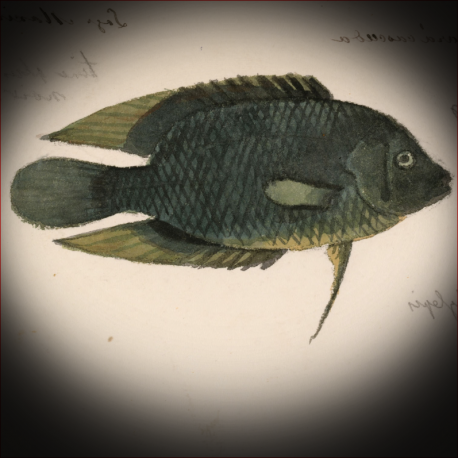More info
Datasheet
| Minimum Tank Size | 243 litres / 64.19 US gallons |
| Maximum Size | 25.0cm / 9.84inches |
| Temperature | 24°C / 75.20°F - 30°C / 86.00°F |
| Hardness | 1-10ºdH |
| pH | 5.0-6.5 |
General Description
The Rio Negro Chocolate Cichlid, scientifically known as Hypselecara Coryphaenoides, is a relatively scarce species in the aquarium trade. It can be distinguished from its closest relative, H. temporalis, through body shape differences and variations in coloration and patterning. This species typically exhibits a darker overall coloration and has a distinctive dark blotch on its flanks positioned on or above the lateral line.
Aquarium Setup
For optimal display, a biotope setup is recommended for the Rio Negro Chocolate Cichlid. This can be achieved by using river sand substrate, driftwood branches, twisted roots, and dried leaves to mimic its natural habitat. Avoid aquatic plants, as they are not commonly found where this species originates. Maintaining the water color as a weak tea hue by adding and replacing dried leaves periodically, along with incorporating aquarium-safe peat in the filter, is essential. Additionally, dim lighting is preferable. Alternatively, a well-planted tank can also be suitable, but be mindful of the cichlid's tendency to dig once sexually mature.
Behaviour
This cichlid species is generally peaceful, especially in comparison to other cichlids of similar size. It tends to ignore other fish species unless breeding. While juveniles may tolerate conspecifics, aggression towards their kind increases upon reaching sexual maturity. Pair bonding is crucial for breeding, with mated pairs often displaying aggression towards tankmates. In most cases, a single pair should be housed in a tank due to their territorial nature.
Feeding and Diet
As an omnivorous species, the Rio Negro Chocolate Cichlid is easy to feed, with a primary diet of high-quality cichlid pellets supplemented by live and frozen foods like earthworms, prawns, brine shrimp, and bloodworms. Including vegetable matter such as frozen peas and spinach is recommended, while high-protein foods like red meats should be avoided to prevent health issues.
Reproduction & Dimorphism
This species engages in substrate spawning and forms monogamous pair bonds. Breeding pairs intensify in coloration and develop specific markings when in spawning condition. Males are slightly larger and may develop nuchal humps, while both sexes exhibit a vivid yellow stripe along the back during breeding. Breeding conditions require soft, acidic water, and successful reproduction involves defending the spawning site, egg fertilization, and parental care of the fry.
Habitat and Distribution
The Rio Negro Chocolate Cichlid is typically found in forested areas within slow-moving tributaries off the main river channels of various rivers in the Amazon basin, including the Negro, Trombetas, Tapajós, and Orinoco. They thrive in dark, acidic water stained by tannins from decaying organic matter.

